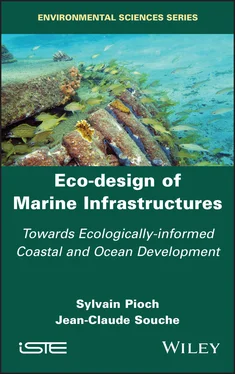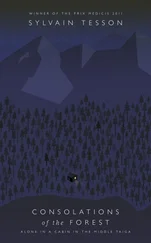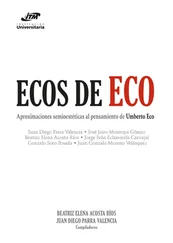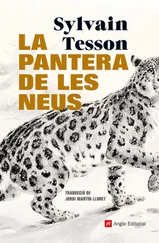Political actions or the dissemination of good environmental practices have been strengthened in recent years. At the international level, for example, we can cite the Working with Nature program (from the International Association of Ports and Canals, 2008), based in particular on the experience of Port 2000 in Le Havre and the numerous guides produced PIANC 6(2011a, 2019, 2020); the World Harbour Project 7(Steinberg et al . 2016), which brings together 15 ports around the issues of ecological engineering, nature-based solutions and the resilience of natural port environments; at the European level, the CWA 16987 (Clean Harbour Guidelines); and at the national level, the reflections initiated as part of the Grenelle mission on the “Port of the Future” (led by CEREMA 8), or regional variations, such as for the major seaport of Marseilles and the “GIREL” 9research program, which was carried out in 2010.
In spite of these virtuous impulses, in the field, during the first design phases of a project, the objectives are primarily to propose a structure that meets technical constraints (resistance, durability) with a controlled cost, aligned with socio-economic objectives that meet a functional need: a marina or a commercial port, an offshore wind turbine, a breakwater, an offshore wastewater treatment plant, etc. The environmental question is applied to justificatory and secondary considerations which are dealt with once the technical and socio-economic choices have been made, under regulatory “constraint” (Airoldi et al . 2021).
This is where the purpose of eco-design, or oekodesign 10, takes root, for its objective is to design a project, from sketch or feasibility phases (within the meaning of Act no. 85-704 of July 12, 1985, on public contracting and its relationship with private contracting, known as the MOP Act), according to ecological performance or co-benefit objectives. The aim is not to “wipe the slate clean” for the past but, based on technical engineering knowledge, to introduce biophysical considerations, in connection with the need to protect and develop the natural environment in the project to develop the sea.
1.2. Definition of eco-design of marine infrastructures
The eco-design of marine infrastructures is the result of recent cultural evolutions, as mentioned above. It is part of the interdisciplinary field of ecological engineering, which includes human sciences (geo-planning, law), engineering sciences (civil engineering, materials science) and natural sciences (biology, ecology). It responds to a major challenge for responsible human societies and biodiversity managers.
For Francis and Lorimer (2011), reconciling human and non-human in the project of developing urban territories, by integrating the conservation of nature, is undoubtedly the greatest challenge of the 21st century. For these same authors, the contribution of ecological engineering, a discipline that is still in its infancy in terms of the solutions it proposes, is a decisive factor in ecodevelopment. It was Odum, in 1962, in the context of his work on energy flows in marine ecosystems, who proposed the term “ecological engineering” (Odum et al . 1963). The most widely accepted definition today is that of B. Mitsch, a student of Odum, associated with S.E. Jørgensen (Mitsch and Jørgensen 1989): “Ecological engineering uses ecology and engineering to predict, design, construct or restore, and manage ecosystems that integrate human society with its natural environment for the benefit of both.”
The intimate link between ecology, land use planning and civil engineering is underlined by Van Bohemen (2004) who makes it the key to its diffusion and application. According to Bergen et al . (2001), the design of development projects must integrate the issues of human societies in an ecological approach, for a mutual human–nature benefit, following steps that ratify its application, the first three of which are:
1 1) design in accordance with ecological principles;
2 2) design adapted to the environmental specificity of each site;
3 3) maintaining the functional requirements of the structures, regardless of environmental requirements.
While ecological engineering includes eco-design in its definition, this term seems important to us because it underlines a crucial aspect in the success of a project benefiting human and nature; that is, to apply ecological concerns at the feasability step, to guide the project design from the beginning. Indeed, all too often, so-called eco-designed infrastructures take into account environmental aspects once the technical-economic aspects have been resolved ( Figure 1.2).
According to the French engineers’ union Syntec Ingénierie, this approach can be defined as follows: “Eco-design is the technical design of projects by also considering global and local ecological concerns”. It is “an approach that can be applied to a large number of sectors, without generating additional costs in the long run” (Les Cahiers de l’Ingénierie 2010 11).
We will complete this definition with the idea that ecological added value can also improve the technical performance of a structure, as a co-benefit. This would be the case, for example, of a desired effect of bioprotection of an eco-designed quay enabling, by its colonization, the promotion of protection of concrete from chloride ions (gain on the aging of the structure which is avoided).

Figure 1.2. Eco-design project methodology (top blue arrow) compared to a standard approach (middle slice of the figure)12. For a color version of this figure, see www.iste.co.uk/pioch/marine.zip
We will therefore propose as a definition of eco-design of marine infrastructures the process of “designing sustainable maritime development projects with precise/specific technical and ecological functions 13, which generate socioecosystemic co-benefits, without generating additional costs in the long term”.
It also seems important to us to address an aesthetic aspect for better integration into the underwater landscape. The aesthetic question of an object placed within a still “natural” environment, the seabed, seems essential to us. Indeed, addressing the “classic” needs of development meets precise rules of art, currently the subject of specifications, never integrating values of landscape aesthetics. However, the “beautiful” and “good” are always at the center of the concerns of humans, when they have the ambition to see their creations endure in the objective of being “well-made” and when they have the financial means to fully undertake this ambition. The morphologies of submerged elements are resolutely human and far from the soft forms usually found under the sea: cubes, trapezoids, beams, chaotic heaps, etc. A landscape approach would allow a better visual integration of these developments under the sea and undoubtedly a better acceptance of projects by the concerned actors and the general public. The contributions of bio-inspiration, more modest than the idea of biomimicry, can also usefully be called upon here, not only in terms of mechanisms that favor biodiversity (roughness, quality of materials, etc.), but also in terms of the overall visual aspect of a structure in a natural underwater environment. An eco-designed structure is a structure whose forms are bio-inspired and which integrates ecosystem conservation objectives into its functions, as well as its technical functions.
PIANC also emphasizes the need to design works according to the concept of sustainable development and publishes professional recommendations with this in mind (PIANC 2011a). This is the idea of “working with nature”, developed by Dorien Korbee, which is defined as:
Читать дальше













